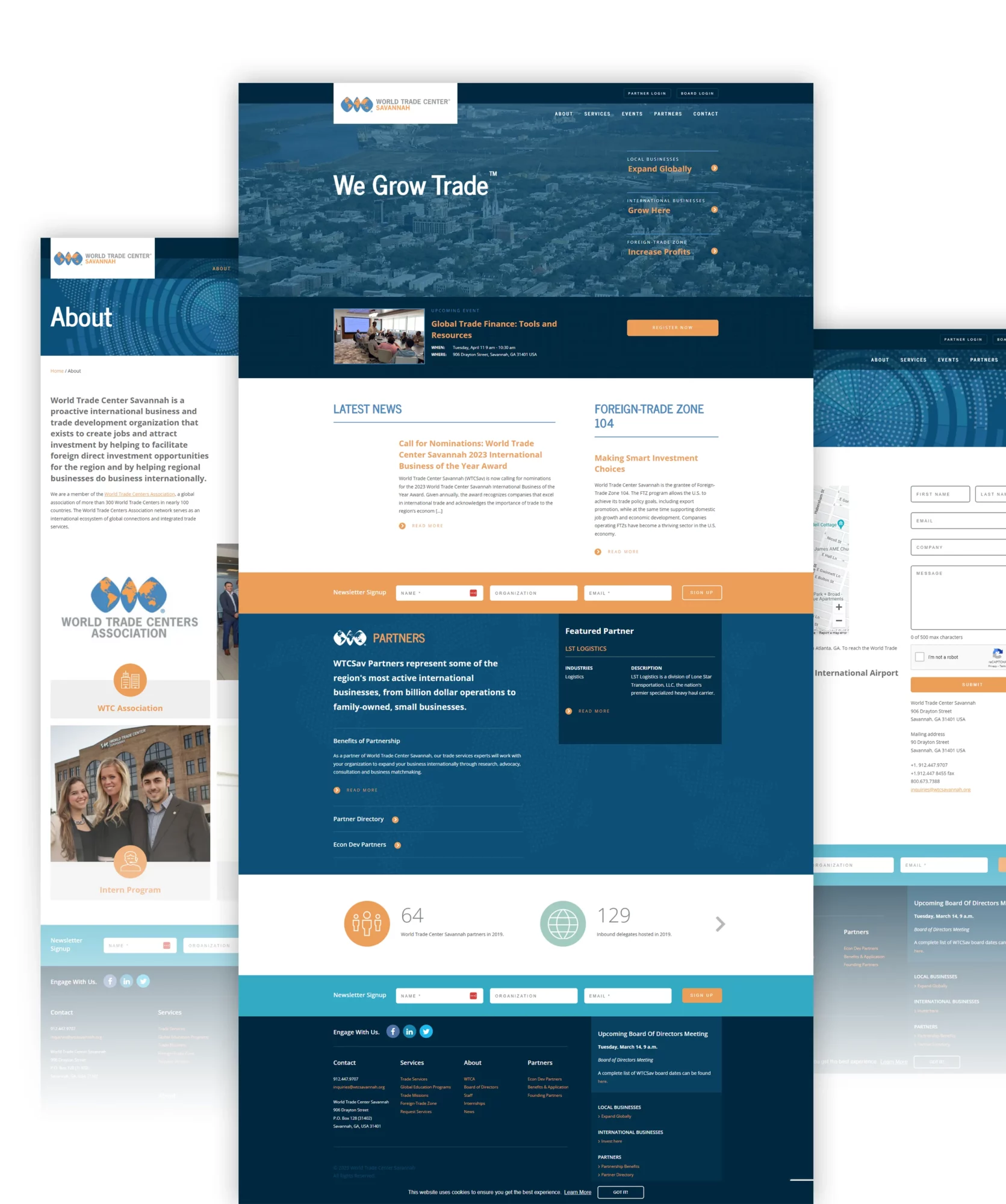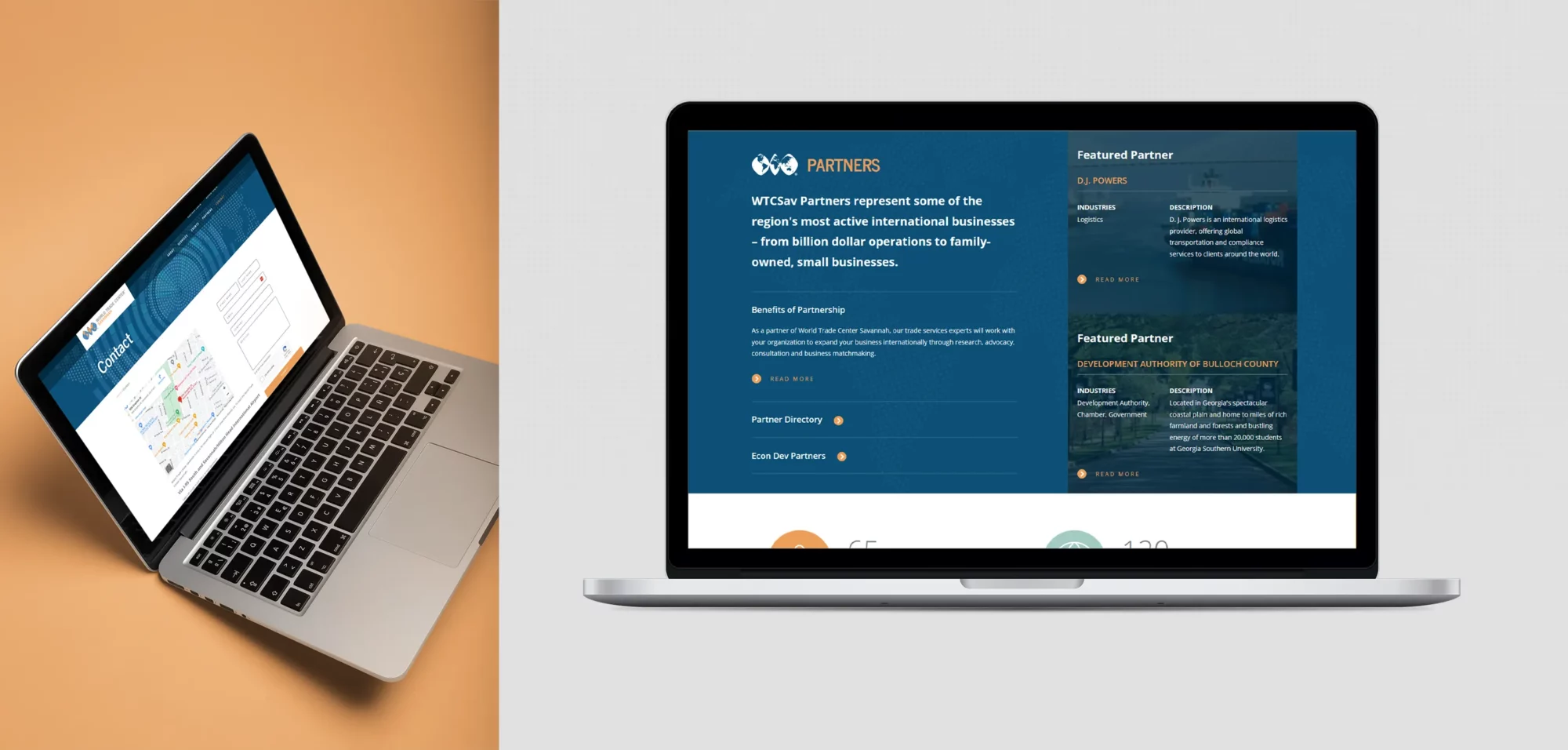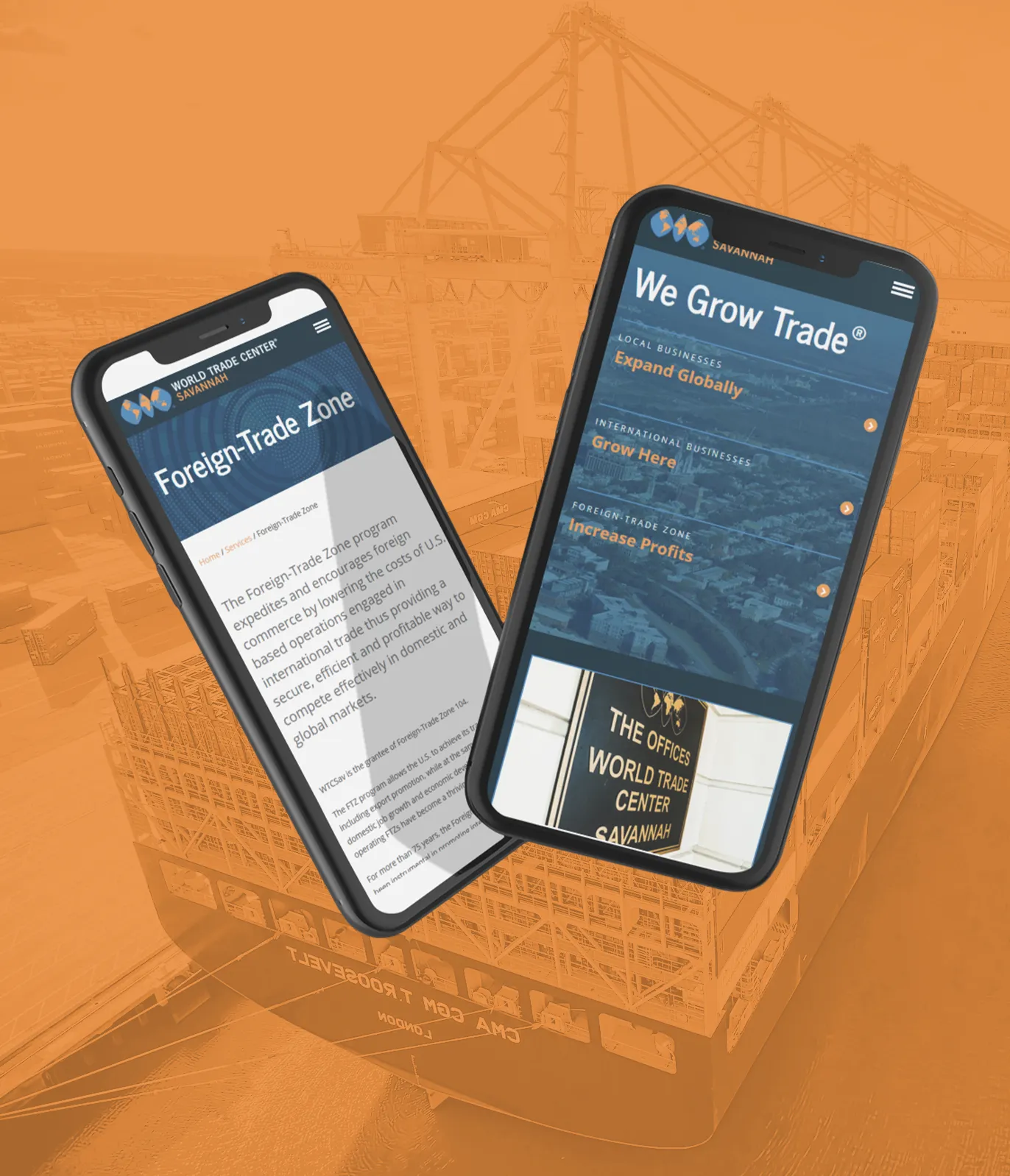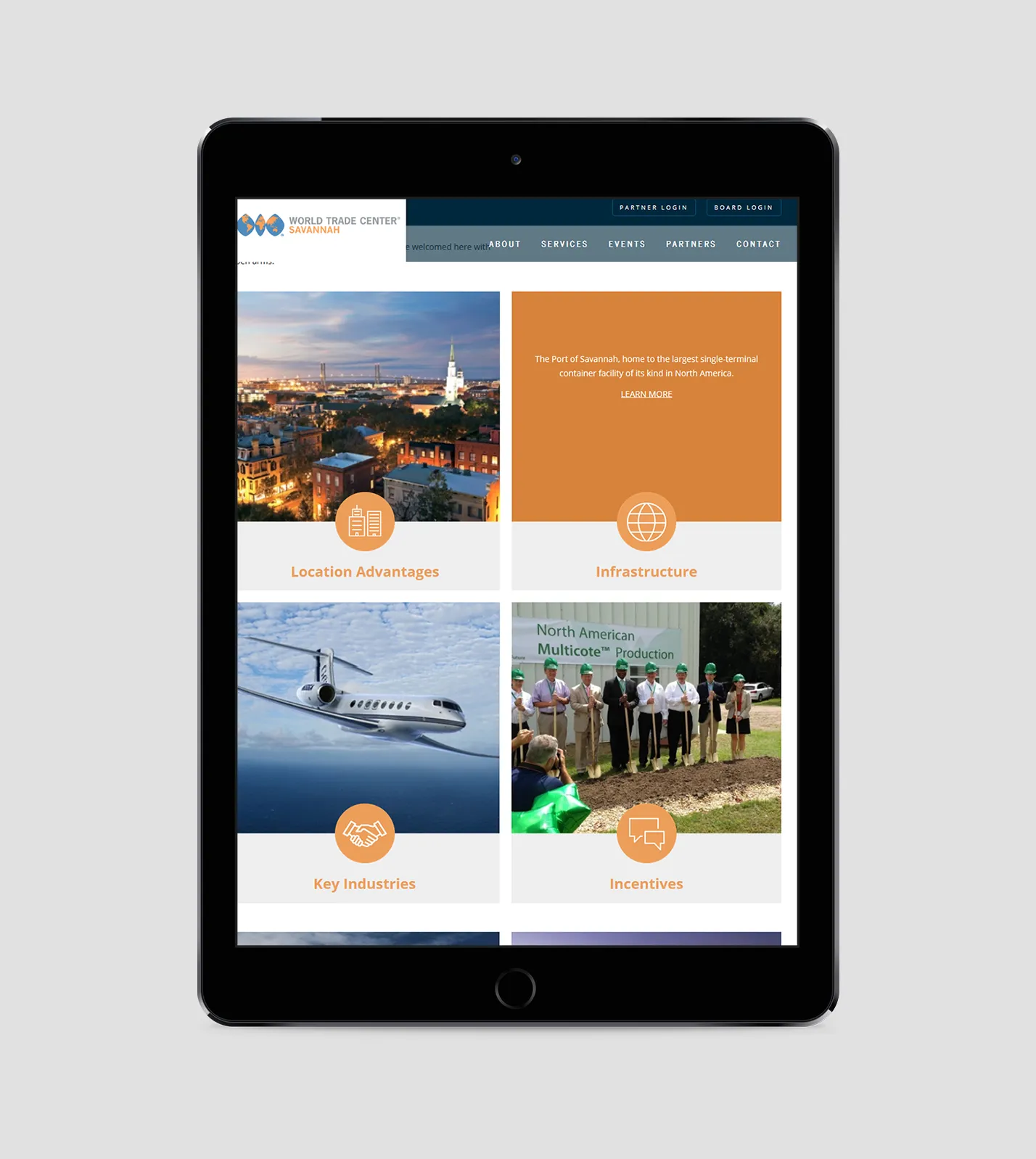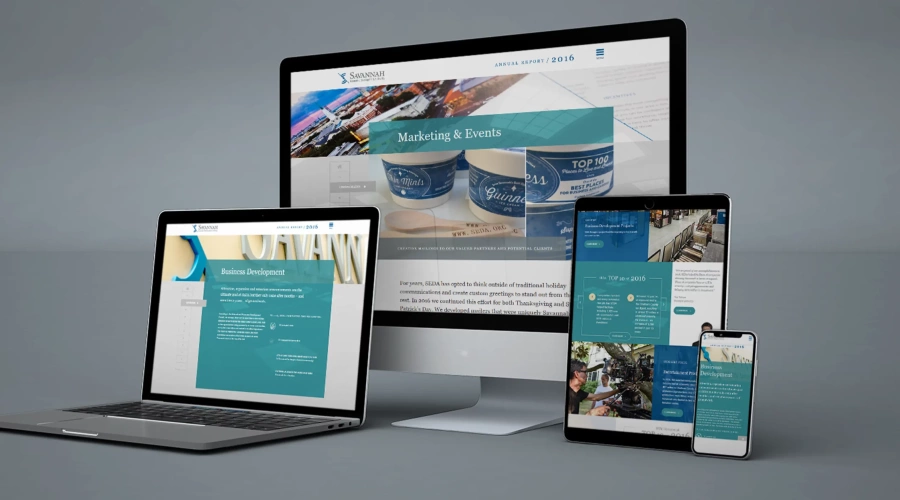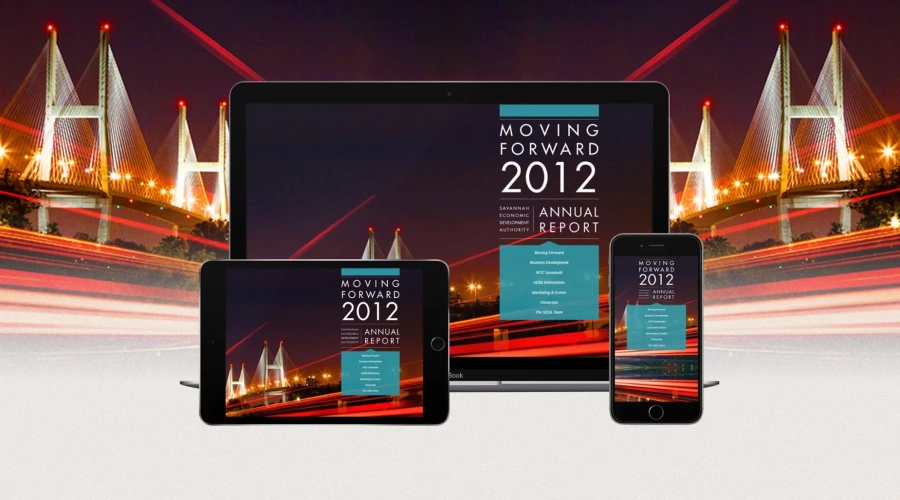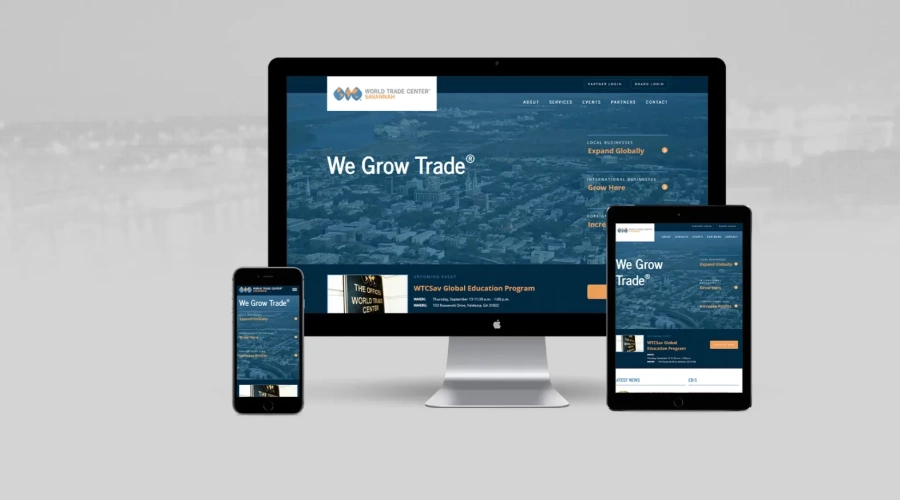
Economic Development Marketing
World Trade Center Savannah Website Redesign
Savannah’s chapter of the World Trade Center organization needed an updated web presence which meant not just a fresh UI but also a laundry list of custom functionality needs.
The new site needed to have:
- Password-protected login areas for partners and board members to access documents and resources
- A list of upcoming events for the Global Education Programs with registration and payment capabilities
- Online forms and consolidated, downloadable PDFs to allow visitors to request services
- Audience segmentation for their varied user base
- Salesforce integration with their mailing list sign-up

Content Strategy
We started with fleshing out a solid sitemap. Audience segmentation, or dividing the site’s content into categories that speak to each of our client’s target audiences helped guide us in this process. So in this situation, we thought about the needs of:
- local businesses,
- existing partners,
- international companies, and finally,
- other economic development agencies.
The goal was to structure the site to minimize clicks and get these very diverse groups all the information they needed.
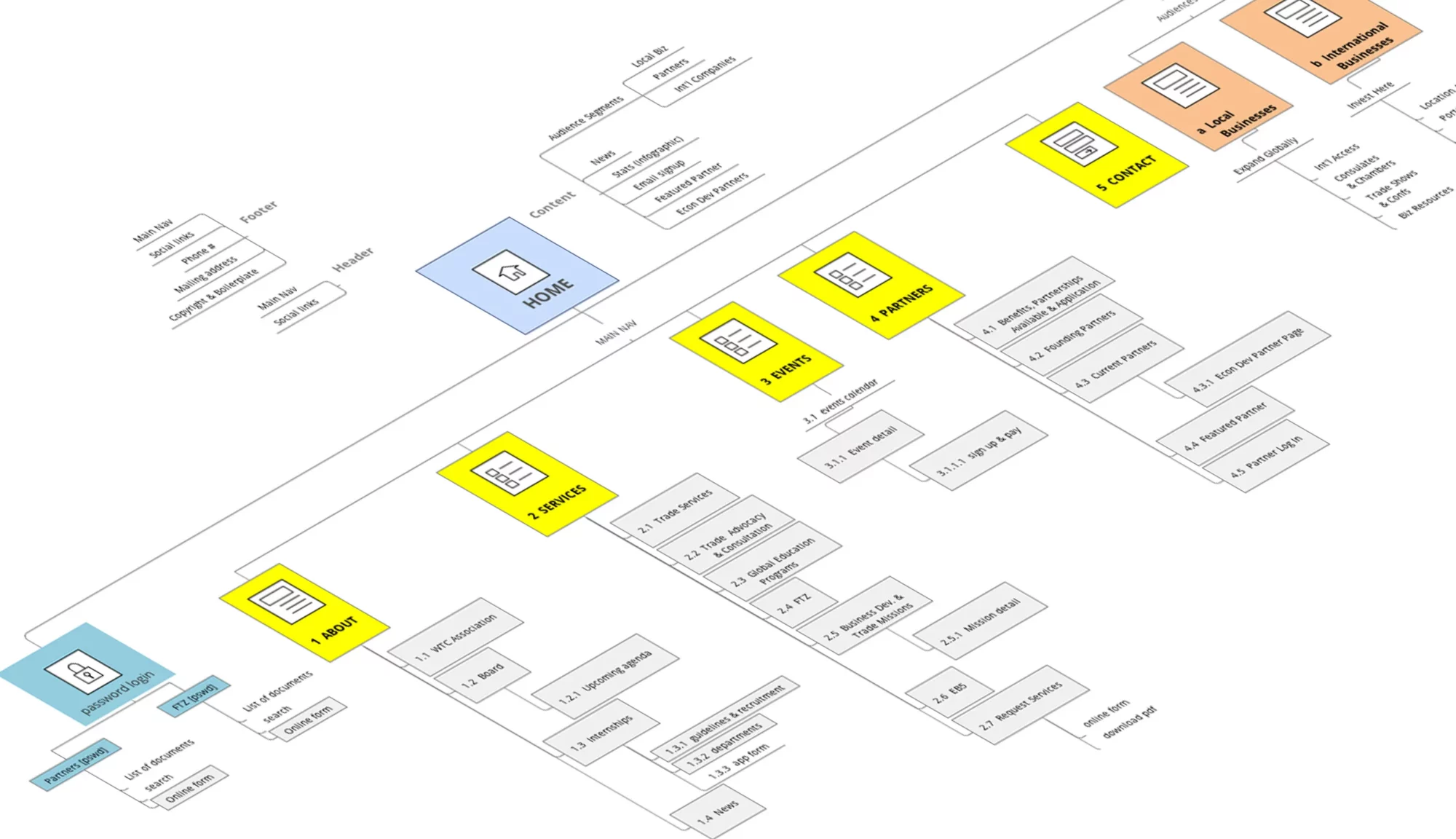
Wireframes & Design System
Only after settling on a sitemap with the client did we start tackling laying out the main modules of the site in the form of wireframes. Instead of looking at each web page as its own entity, we viewed them as collections of elements or modules to be assembled as needed across the site. This made building the site more efficient and established visual consistency throughout the UI that helps users navigate the site quickly. Plus, once the wireframes were approved, we didn’t have to waste time designing each page individually, rather we created a design system outlining the look of all the page elements.
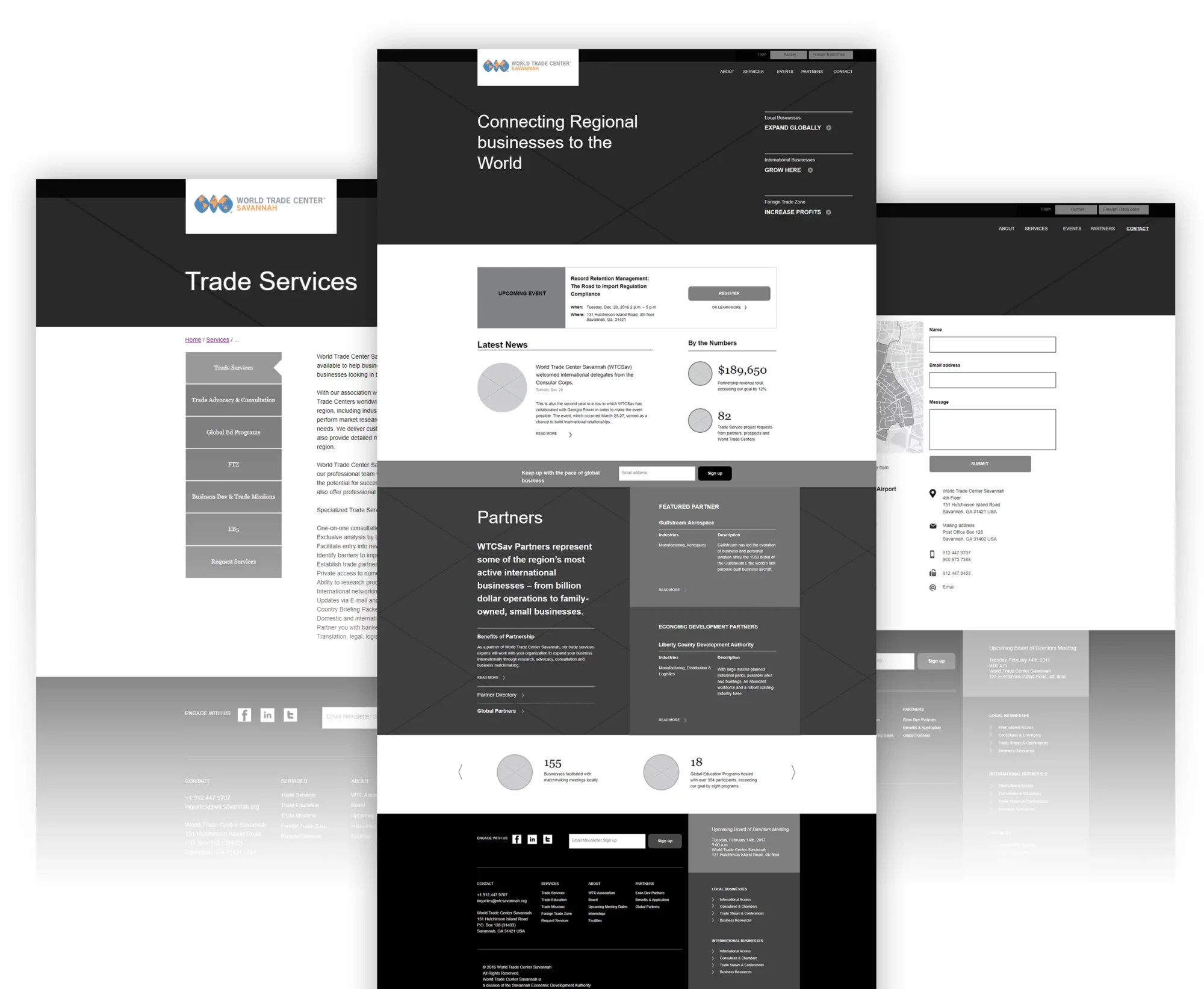

Prototypes
And finally we merge the styles of the design system with the layout of the wireframes to give an accurate representation of what the final site will look like in clickable prototypes. Once these prototypes were approved, the development built the site on the WordPress platform, an easy-to-use CMS so that our client could handle updating content themselves and keep their site up-to-date.
